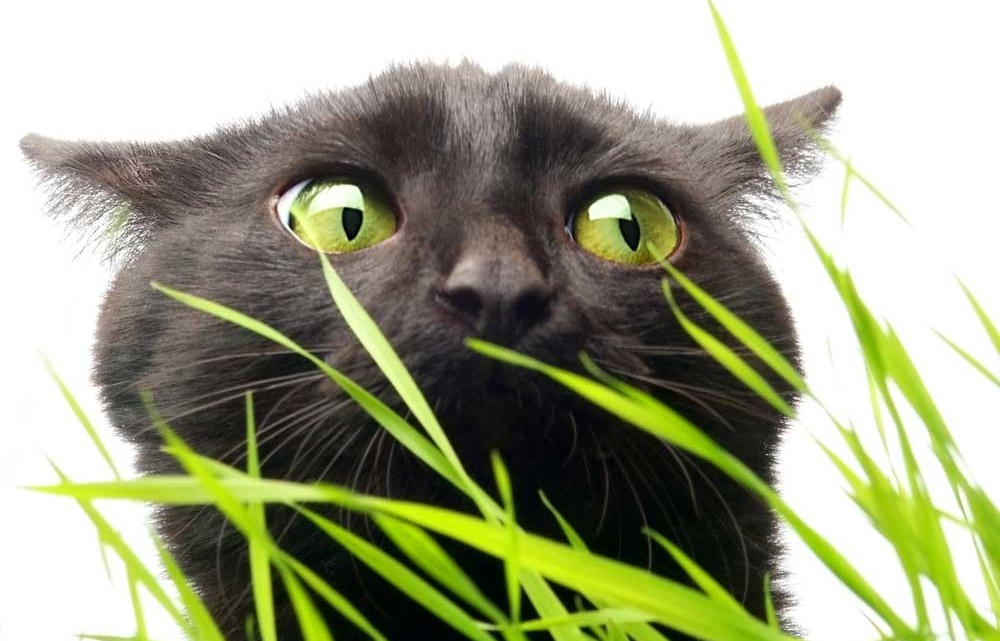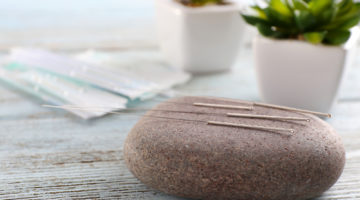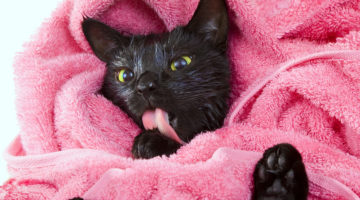Does your cat chew on your houseplants or eat your garden flowers? Many plants can make him sick, so it’s vital to know the toxic from the non-toxic.
Cats love nibbling plants. It’s a natural instinct – but it can cause serious illness and even death if the plants are poisonous. Having cats doesn’t mean you have to give up all your house and garden plants. It just means you need to know which plants are toxic and which ones aren’t, so your cat can safely co-exist with them.

Tiger Lily.
Beware the lily family
The lily family is especially toxic to cats, and includes many indoor and outdoor varieties, some of which you wouldn’t ordinarily associate with lilies, such as tulips and aloe vera.
(Aloe vera offers healing qualities when used properly, but ingesting the plant can result in vomiting, diarrhea and other problems in cats.)
“In practice, I see lily ingestion as the most common plant poisoning,” says veterinarian Dr. Kirsten Anderson. “Lilies such as the peace, Peruvian and calla lily cause skin irritation of the mouth, tongue and esophagus. Symptoms can occur immediately after ingestion and may include pawing at the face, drooling, foaming and vomiting. In some cases, swelling of the lips, tongue, oral cavity and upper airway can also occur.
“Tiger lilies, daylilies, Easter lilies, Asiatic lilies and Japanese show lilies are deadly,” Dr. Anderson continues. “Ingestion of even very small amounts of any part of these plants can result in kidney failure and death if the cat is not treated immediately. Signs can occur within a couple of hours and may include vomiting, depression and a reduced or complete loss of appetite. If treated immediately, most cats will recover.”
Other toxic plants
Veterinarian Dr. Chris Bessent adds that other members of the lily family, such as the asparagus fern, are also toxic to cats, as are similar plants like the amaryllis, anemone, daffodil, and lily of the valley. Her list also includes the philodendron and chrysanthemum, while Dr. Anderson warns against the dieffenbachia, sago palm, cyclamen, rhododendron, azalea, oleander and castor bean.
Preventing plant poisoning
Inside the house
- Remove hazardous plants, re-locate them out of your cat’s reach, or replace them with safer species such as African violets, orchids or Christmas cacti. Hanging plants from the ceiling or keeping them in a room off limits to your cat are two ideas.
- Boredom can play a part in plant-eating behavior. Enriching your cat’s environment with extra play, interactive toys, scratching posts and cat condos may distract him from chewing your plants.
- Keep a pot of organic cat grass on a table or windowsill – this gives your cat something safe and healthy to nibble, and will encourage her to ignore your houseplants.
Outside the house
- If your cat goes outdoors, either remove toxic plants from your garden, or supervise her when she’s outside. A cat enclosure gives her outdoor fun and exercise while keeping her away from the flowerbeds.
- Immediately dispose of clippings, uprooted plants, roots, bulbs, etc. Different plant parts, such as leaves, stems, roots, seeds or sap can be poisonous.
- It’s okay for your cat to eat lawn grass – if it’s free of fertilizers and pesticides. “Cats often eat grass,” says Dr. Bessent. “It makes them vomit, but this can be considered a way to cleanse the stomach of hairballs. Grass is also high in bicarbonate and can help decrease acidity in the stomach.”
Despite the number of plants that are toxic to cats, a little foresight, thought and planning means you can continue satisfying your green thumb while keeping your feline friend safe.







No Comment